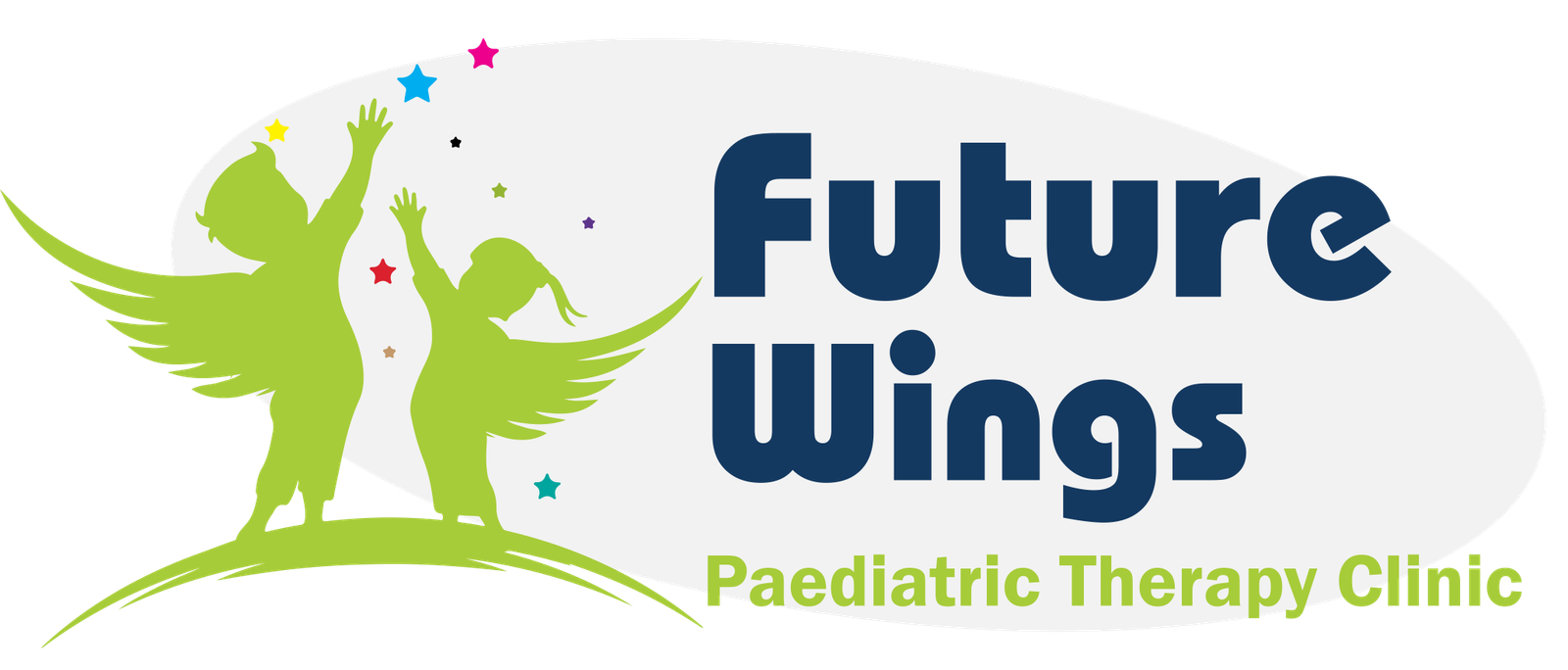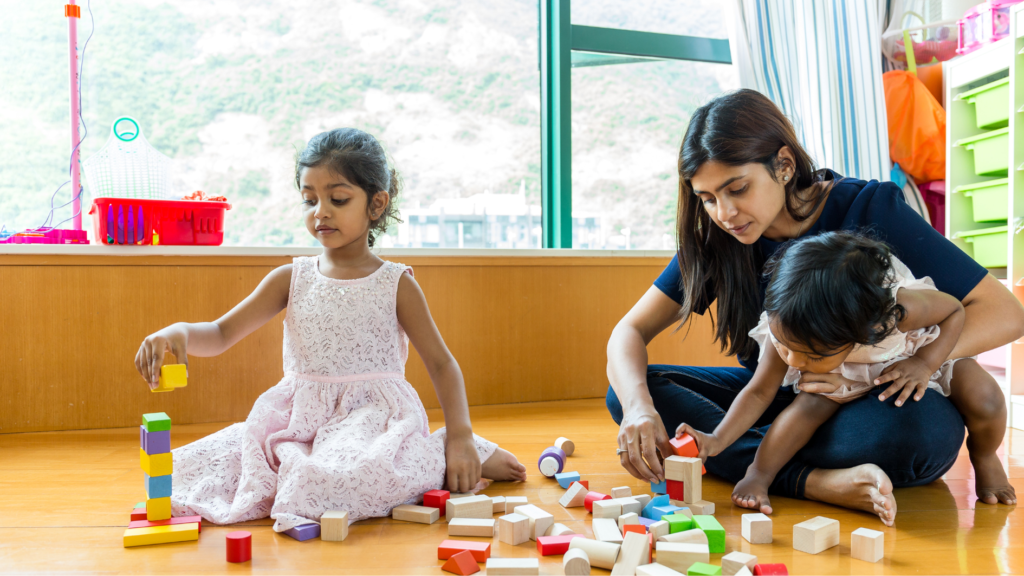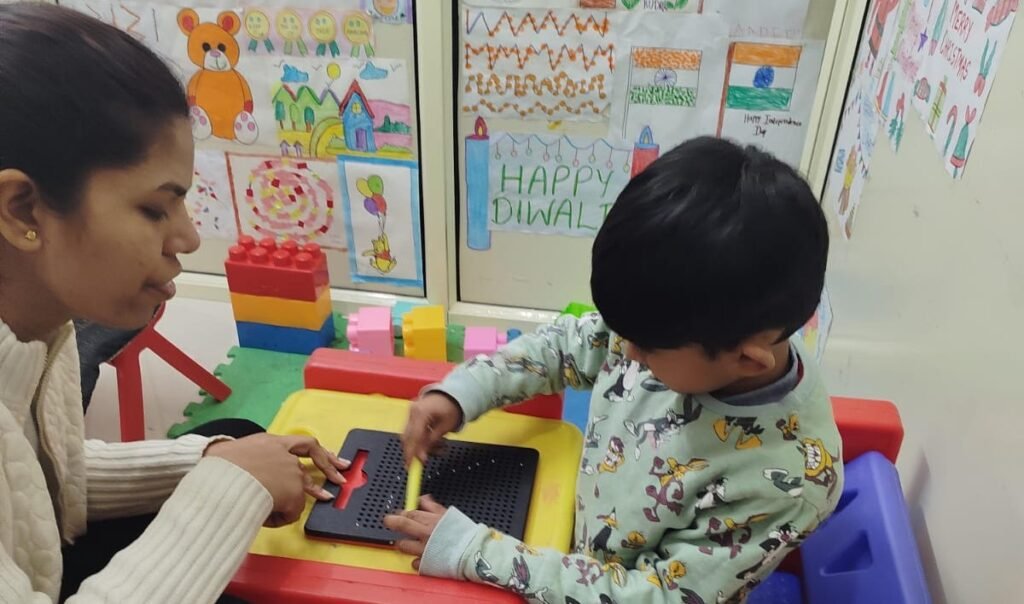In a typical Indian household, when a child misses developmental milestones—be it delayed speech, poor eye contact, difficulty with play, or restlessness in school, it’s often casually dismissed with remarks like “bacche aise hi hote hain” or “thoda shaitaan hai, theek ho jaayega.” These well-meaning responses usually delay a deeper understanding—that the child may have an underlying neurodevelopmental condition like Autism Spectrum Disorder (ASD), Attention Deficit Hyperactivity Disorder (ADHD), global developmental delays, or Sensory Processing Disorder.
Such developmental disorders are increasingly being diagnosed in India, not necessarily due to a rise in cases, but because better tools and growing awareness are uncovering issues that had long gone unaddressed. Still, widespread misconceptions, stigma, and lack of awareness about early signs and available interventions remain major hurdles for Indian families.
Occupational Therapy (OT)
These children face barriers most of us cannot imagine—difficulty in writing, speaking, socialising, or even doing everyday tasks like dressing or eating without help. Their uneven development often leaves parents confused, emotionally drained, and financially burdened. While families in metro cities are gradually turning to professional help, many across India, particularly in smaller towns, remain unsure of the “why” and “what next.” Delayed diagnosis, a shortage of trained therapists, deep-rooted social stigma, and inadequate government support continue to make this journey slow, isolating, and immensely stressful for countless families.
This is where Occupational Therapy (OT) steps in—not just as a treatment, but as a lifeline.
Occupational Therapy is a scientific, evidence-based approach that focuses on helping children become independent in their daily life activities. From improving motor coordination to managing sensory issues and developing better social and cognitive skills, OT works on all areas that impact a child’s ability to function in school, at home, and in society.
It’s not enough to give a patient something to do with their hands. You must reach for the heart as well as the hands. It’s the heart that really does the healing.
Ora Ruggles
In clinical practice, occupational therapists assess a child’s sensory, motor, cognitive, and behavioral development and design intervention plans that work at their level, pace, and interests. Some of the scientific techniques used in OT for children include:
Recent Posts
- How Occupational Therapy Helps Special and Neurodiverse Children Lead Self-Dependent Lives
- How Occupational Therapy Helps Children With Special Needs In Developing Essential Life Skills
- Top Features of an Effective Speech Therapy for Kids
- Top Five Benefits of Enrolling in Special Education for Kids
- Early Signs of Autism – What Parents Need to Know
- Sensory Integration Therapy – Helps children manage hypersensitivity or hyposensitivity to sound, touch, movement, or light.
- Neurodevelopmental Treatment (NDT) – Used especially for children with cerebral palsy or motor delays, to facilitate movement and posture control.
- Motor Planning and Praxis Intervention – Assists children in learning how to perform sequences of actions like dressing or brushing teeth.
- Visual-Motor Integration Activities – Helps with tasks like writing, drawing, and reading.
- Cognitive-Behavioral Approaches – Used to support attention, problem-solving, and managing emotional responses.
- Play-based Therapy – Engages children through purposeful play to build social, motor, and communication skills.
When a child with autism finds it hard to tolerate loud sounds or bright lights, OT uses Sensory Integration Therapy to help the child gradually process these inputs without distress. When a child with ADHD can’t sit still or pay attention, therapy is designed to help them channel their energy and build focus. For a child who struggles with holding a pencil or tying shoelaces, therapists use fine motor training to build strength and precision.
Early Intervention
Yet, in most Indian cities and towns, occupational therapy remains poorly understood. Many families first turn to general physicians or even astrologers, only reaching a therapist after precious months—or years—are lost. By the time they arrive at our clinic, many children are already lagging behind their peers academically, socially, and emotionally.
Scientific research globally and in India shows that early intervention—starting therapy before the age of five—can make a world of difference. Children’s brains are incredibly adaptable during the early years. With the right therapy, many can catch up significantly and, in some cases, even attend mainstream schools without additional support.
At Future Wings Clinic, located in Dwarka, Delhi, we work with children of all abilities and developmental profiles. Our mission is simple: to empower children with special needs to lead independent, confident, and joyful lives. Our multidisciplinary team of occupational therapists, speech-language pathologists, psychologists, and special educators work together to create personalised plans for every child.
Using globally recognised frameworks such as Sensory Integration, Applied Behavior Analysis (ABA), Oral placement therapy, primitive reflexes integration and Handwriting Without Tears, we help children not only improve their basic skills but also grow in confidence. Equally important is working with the parents—training them to understand their child’s behaviour, cope with daily challenges, and carry therapy techniques into their homes.
In my decade-long journey as a pediatric occupational therapist, I’ve seen children who once avoided eye contact begin to speak in sentences, children who couldn’t hold a spoon now feeding themselves, and those who struggled with touch now giving high-fives and hugs. These are not just developmental gains—they are victories of hope, science, and early support. We believe therapy doesn’t happen only within the four walls of a clinic; it happens at home, at school, and in everyday moments. That’s why we also train parents and caregivers to carry forward therapy techniques in daily life.
What is Holding India Back?
While awareness is gradually growing in metro cities, vast parts of India still see OT as an unfamiliar or misunderstood concept. Some families, out of fear or social pressure, choose to hide their child’s condition rather than seek help. Many schools are not equipped to identify or support such children, and the healthcare system has not yet mainstreamed developmental screening as part of early childhood care.
Common myths like “the child will grow out of it” or “don’t label the child” often delay timely therapy. Additionally, societal stigma equates therapy with mental illness, discouraging families from reaching out. These attitudes must shift—from “log kya kahenge” to “mere bacche ko kya madad mil sakti hai?”

The Way Forward: Inclusion, Awareness & Breaking the Stigma
India urgently needs an inclusive framework that brings together parents, educators, therapists, and policymakers. Schools should be better equipped to handle neurodiverse students with trained staff and support systems. Paediatricians should routinely screen for developmental delays. Government support should extend to therapy subsidies and insurance coverage for early intervention.
We must break the stigma that therapy is something to be ashamed of. Therapy is not about fixing a child—it’s about unlocking their strengths and helping them shine in their unique way.
A neurodiverse child isn’t broken—they just learn and respond differently. With early detection, the right therapy, and a supportive environment, children with special needs can achieve more than what society expects—and often more than what even their parents had hoped for.
The future belongs to those who believe in the potential of every child. At Future Wings Clinic, we don’t just believe—we act on it every single day.
About the Author:
Dr. Dinesh Kumar is a Pediatric Occupational Therapist and Founder of Future Wings Clinic in Dwarka, Delhi. For more information or to book an appointment, visit www.futurewingsclinic.com.
To learn more about Occupational Therapy (OT), visit https://futurewingsclinic.com/occupational-therapy/




